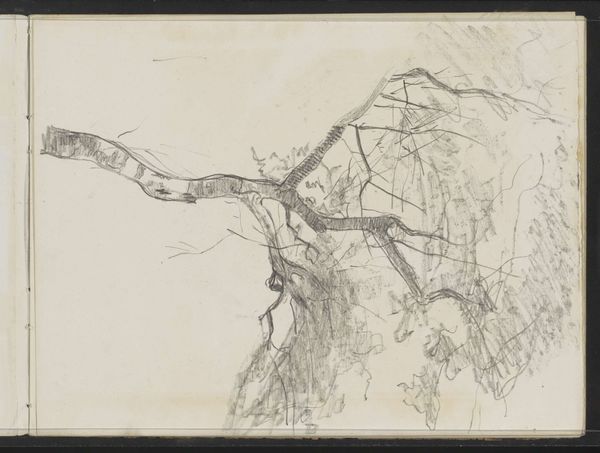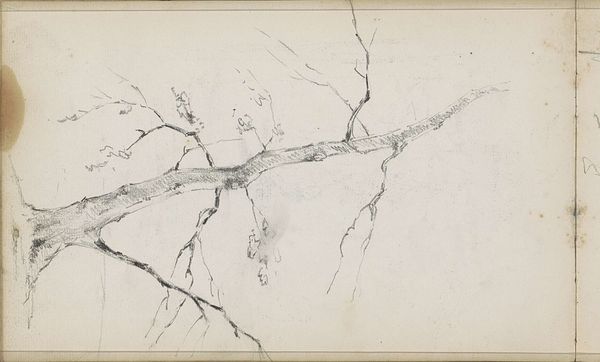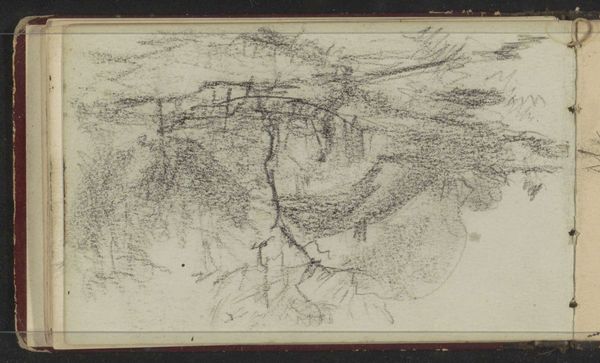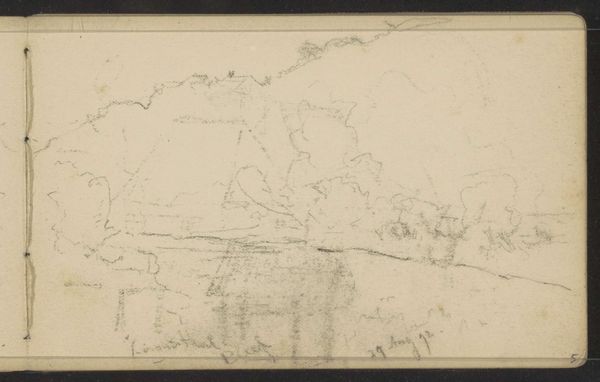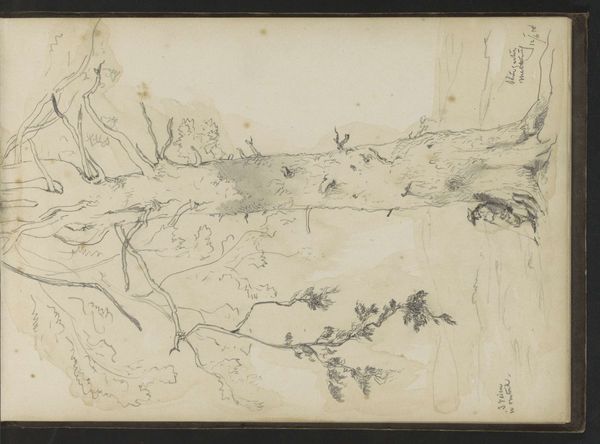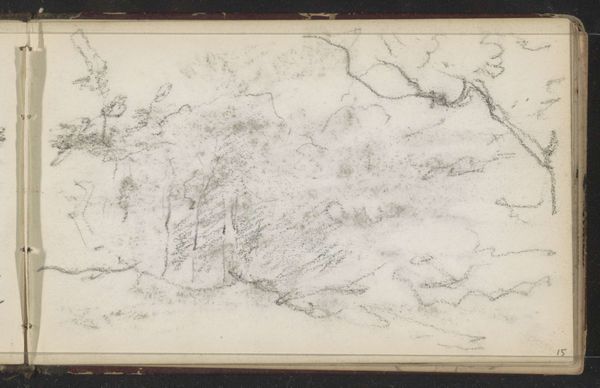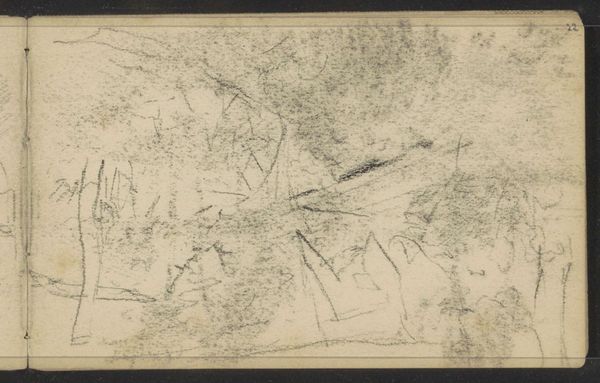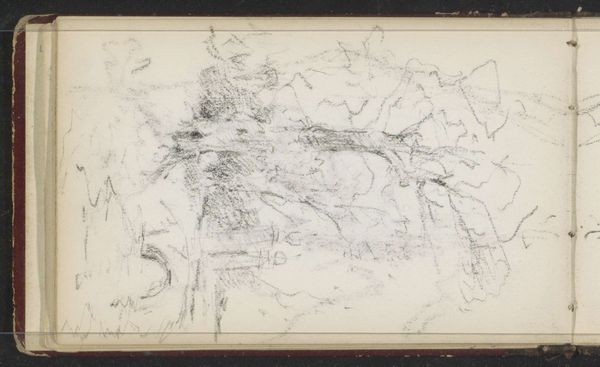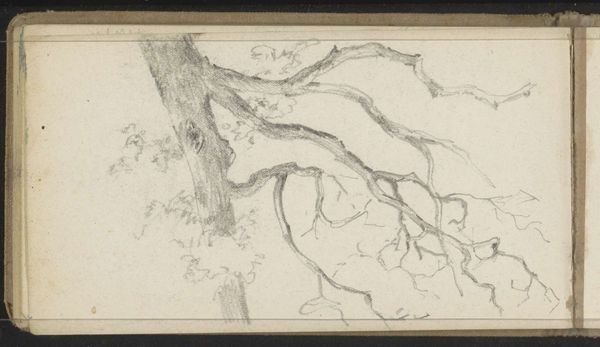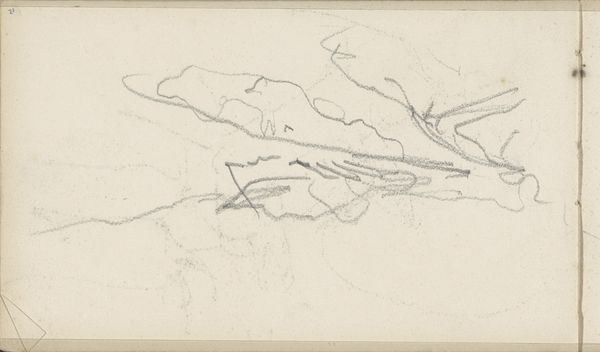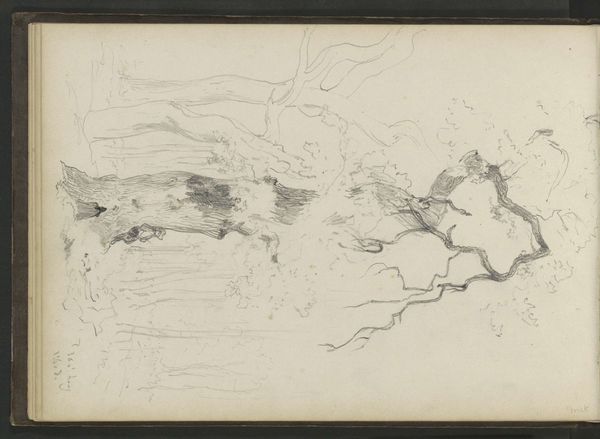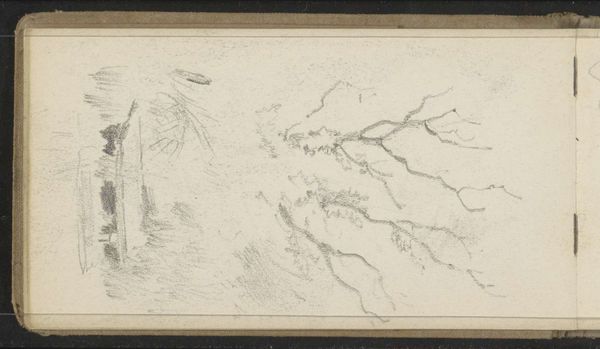
drawing, ink, pen
#
drawing
#
pen sketch
#
landscape
#
ink
#
line
#
pen
#
realism
Copyright: Rijks Museum: Open Domain
Curator: It's stark, almost melancholic. The bare branch dominating the frame... it gives me a sense of quiet observation, a lonely sort of beauty. Editor: We're looking at "Kale tak en een tak in bloei", which roughly translates to "Bare Branch and a Branch in Bloom." This drawing in pen and ink comes to us from Maria Vos, and was likely made sometime between 1856 and 1870. Curator: Vos has captured a juxtaposition here, a moment of transition. One branch barren, reaching out, the other bursting with life. It’s like a visual metaphor for… resilience, perhaps? Editor: The Rijksmuseum holds this small work, and I find myself thinking about its place in the visual culture of its time. Landscape drawings, particularly those emphasizing the natural world, enjoyed renewed popularity amongst a growing middle class. A scene like this resonated. Curator: But is it just the realistic depiction that captivated viewers? Or could there be something deeper? In many traditions, trees represent connection between the earthly and the spiritual realms, branches symbolizing family lineages. Maybe the starkness suggests something more personal to Vos? Editor: That's interesting. Maybe so. Considering Vos's own life within a rapidly changing Netherlands, might we also see this artwork reflecting broader societal tensions: the fading agrarian life against the booming cities? Curator: Absolutely. The starkness might represent a fading past, with that hopeful branch symbolizing a tenacious future. It resonates beyond a simple landscape sketch. Editor: Regardless of intention, it’s fascinating to see how a seemingly simple drawing can contain layers of meaning when viewed through the lenses of history and symbolism. Curator: Indeed. Even today, looking at it, I find a renewed sense of nature's cyclical beauty. Editor: A quiet, potent observation for us to carry into our day.
Comments
No comments
Be the first to comment and join the conversation on the ultimate creative platform.
